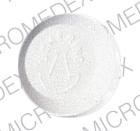Azatadine Interactions
There are 308 drugs known to interact with azatadine, along with 4 disease interactions, and 1 alcohol/food interaction. Of the total drug interactions, 10 are major, 296 are moderate, and 2 are minor.
- View all 308 medications that may interact with azatadine
- View azatadine alcohol/food interactions (1)
- View azatadine disease interactions (4)
Most frequently checked interactions
View interaction reports for azatadine and the medicines listed below.
- Acetaminophen-odan (acetaminophen)
- Acetylsalicylic Acid (aspirin)
- Actifed (pseudoephedrine / triprolidine)
- Advil (ibuprofen)
- Aleve (naproxen)
- Alprazolam Intensol (alprazolam)
- Antiseptic Cleanser (carbamide peroxide topical)
- Aprodine (pseudoephedrine / triprolidine)
- Atrovent (ipratropium)
- Augmentin (amoxicillin / clavulanate)
- Balminil Cough and Flu Sugar Free (acetaminophen / dextromethorphan / guaifenesin / pseudoephedrine)
- Balminil DM (dextromethorphan)
- Benadryl (diphenhydramine)
- Benadryl Allergy (diphenhydramine)
- Benadryl Children's Allergy (diphenhydramine)
- Benlysta (belimumab)
- Benylin Expectorant (dextromethorphan / guaifenesin)
- Betadine (povidone iodine topical)
- Calciferol (ergocalciferol)
- Carboplatin Novaplus (carboplatin)
- Cardizem (diltiazem)
- Chlor-Trimeton (chlorpheniramine)
- Cialis (tadalafil)
- Claritin (loratadine)
- Clexane (enoxaparin)
- Clotrimazole Troche (clotrimazole)
- Colace (docusate)
- Delsym (dextromethorphan)
- Dristan Cold Maximum Strength (acetaminophen / brompheniramine / pseudoephedrine)
- Elixiral (atropine / hyoscyamine / phenobarbital / scopolamine)
Azatadine alcohol/food interactions
There is 1 alcohol/food interaction with azatadine.
Azatadine disease interactions
There are 4 disease interactions with azatadine which include:
More about azatadine
- Compare alternatives
- Side effects
- Dosage information
- During pregnancy
- Drug class: antihistamines
- Breastfeeding
Related treatment guides
Drug Interaction Classification
| Highly clinically significant. Avoid combinations; the risk of the interaction outweighs the benefit. | |
| Moderately clinically significant. Usually avoid combinations; use it only under special circumstances. | |
| Minimally clinically significant. Minimize risk; assess risk and consider an alternative drug, take steps to circumvent the interaction risk and/or institute a monitoring plan. | |
| No interaction information available. |
See also:
Further information
Always consult your healthcare provider to ensure the information displayed on this page applies to your personal circumstances.


